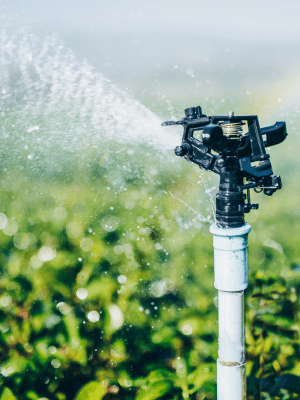 When your association decides to commission a reserve study, you may be wondering what components will and will not be included in the capital plan, or, if certain elements can be included. Landscaping and irrigation are both important parts of any community, but are they included in a reserve study?
When your association decides to commission a reserve study, you may be wondering what components will and will not be included in the capital plan, or, if certain elements can be included. Landscaping and irrigation are both important parts of any community, but are they included in a reserve study?
When it comes to landscaping, this is generally not a reserve component but rather is covered by the operating budget each year. By default, reserve study providers do not include landscaping in the study for multiple reasons. First, landscaping is unpredictable, whereas the useful lives of typical reserve components such as roofs, pavement, and heating systems can be accurately estimated. Arborists can predict how long a tree or bush will last, but because it is living, breathing, and easily damaged, these predictions are fluid and could change quickly due to a number of reasons, including the elements.
Additionally, reserve studies generally project the cost of repairs and replacements for components using like-kind materials. For example, asphalt will be replaced with asphalt, so the project pricing estimates are predictable and standard. When it comes to landscaping, many communities do not just replace – they add, upgrade, and beautify. Because of board turnover year by year, the current board may choose to spend a certain amount on landscaping, while the board next year may want to spend more. Because boards spend discretionary amounts on landscaping, it is usually not feasible to predict project pricing for the near or long-term future.
There is one caveat, however. Large associations or communities with a large number of landscaping elements most likely expend money on trimming, pruning, or upkeep on a predictable, periodic schedule. If an association has a solid grasp on the cost and frequency of this upkeep, such as knowing they spend $50,000 on pruning every 3-5 years, this could be worked into the reserve study on a case-by-case basis.
Irrigation, on the other hand, is a standard reserve component. Unlike landscaping, irrigation systems do have a predictable useful life and predictable maintenance schedules. While irrigation systems are made up of PVC pipes which by themselves may have a significantly long useful life, the system is not simply PVC but rather a combination of pipes, fittings, valves, wires, and other components that together make up the entire system. This installation of each piece of the system, down to the individual pipe connections, creates numerous opportunities for failure. This failure can be based on materials, workmanship, general wear and tear, and even tree roots.
 How irrigation expenditures are approached in reserve studies varies by association, particularly when it comes to the age of the community. Because irrigation does have a long life span, for new or young associations these systems are generally considered a long-lived component. Long-lived components are those which will not need maintenance or repair within the 30-year scope of the study, so they are not a line item in the funding and expenditure plan.
How irrigation expenditures are approached in reserve studies varies by association, particularly when it comes to the age of the community. Because irrigation does have a long life span, for new or young associations these systems are generally considered a long-lived component. Long-lived components are those which will not need maintenance or repair within the 30-year scope of the study, so they are not a line item in the funding and expenditure plan.
However, you should discuss with your provider the merits of partial funding accumulation. If an irrigation system will need maintenance or replacement in 35 years, some firms take into consideration that while not within the 30-year scope, partial funding could be advantageous when included in the study’s capital plan. This is so that further down the road, an association won’t be scrambling or making dramatic reserve fund increases to play catch up in order to complete the project in a timely manner.
When it comes to older communities, especially those built in the 80s or 90s, irrigation will almost always be included in the study, as the system will very likely require maintenance or replacement within the 30-year scope of the study. Because irrigation systems rarely fail entirely at once, their replacement is generally completed in phases, especially in large, widespread associations. Some zones of the property’s system may need replacement sooner than others, and this will be reflected throughout the 30-year capital plan.
Think of an irrigation system as a car, for example. While a car may need oil changes, new brakes, or new tires, none of this upkeep warrants purchasing a whole new car. This maintenance keeps the car healthy and running smoothly, avoiding damage to the vehicle that could incur as a result of ignoring that pesky “check engine” light on your dashboard. Irrigation systems are similar. As mentioned above, these systems are made up of numerous parts and pieces, and just because one section or part needs repair or replacement does not mean the whole system must be replaced. And much like an oil change or getting new tires, the timeline for this maintenance is generally predictable.
Your community is unique, and your reserve study will be too. Be sure to discuss with your provider how both landscaping and irrigation will be handled, but in most cases, landscaping will not be included in the study.


